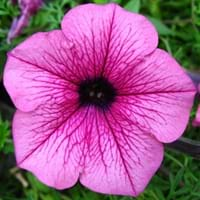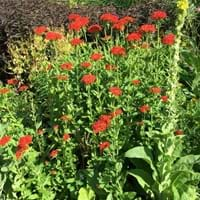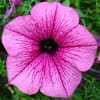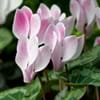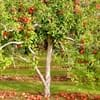Life Span
Annual
Perennial
Type
Flowering Plants, Shrubs
Perennial
Origin
South America
Eastern Europe, Kazakhstan, Mongolia, Northwestern China, Russia
Types
Grandiflora Petunias, Multiflora Petunias, Wave Petunias, Superbell Petunias, Supertunia Petunias
not available
Number of Varieties
Not Available
Habitat
Terrestrial
Banks
USDA Hardiness Zone
9-10
3-8
AHS Heat Zone
Not Available
8-1
Sunset Zone
not provided
A1, A2, A3, 1a, 1b, 2a, 2b, 3a, 3b, 4, 5, 6, 7, 8, 9, 10, 14, 15, 16, 17, 18, 19, 20, 21, 22, 23, 24
Habit
Not Available
Upright/Erect
Flower Color
Blue, Pink, Purple, Red, White, Yellow
Red, Orange, Rose, Salmon, Peach, Orange Red
Flower Color Modifier
Not Available
Bicolor
Fruit Color
Not Available
Brown
Leaf Color in Spring
Golden Green
Green
Leaf Color in Summer
Green
Green
Leaf Color in Fall
Green
Green
Leaf Color in Winter
Green
Light Green
Leaf Shape
Ovate
Ovate elongated
Plant Season
Summer
Spring, Summer
Sunlight
Full Sun, Partial shade
Full Sun, Partial Sun, Partial shade
Type of Soil
Loamy, Sandy
Clay, Loam, Sand
The pH of Soil
Neutral
Acidic, Neutral, Alkaline
Soil Drainage
Well drained
Average
Bloom Time
Fall, Spring, Summer
Late Spring, Early Summer, Summer
Tolerances
Pollution
Drought
Where to Plant?
Container, Ground, Pot
Ground
How to Plant?
Seedlings, Transplanting
Divison, Seedlings
Plant Maintenance
Medium
Medium
Watering Requirements
Keep the ground moist but not water-logged, Requires regular watering, Requires watering in the growing season
Do not let dry out between waterings
In Summer
Lots of watering
Lots of watering
In Spring
Moderate
Moderate
In Winter
Average Water
Average Water
Soil pH
Neutral
Acidic, Neutral, Alkaline
Soil Type
Loamy, Sandy
Clay, Loam, Sand
Soil Drainage Capacity
Well drained
Average
Sun Exposure
Full Sun, Partial shade
Full Sun, Partial Sun, Partial shade
Pruning
Cut or pinch the stems, Do not prune during shooting season, Remove dead or diseased plant parts, Remove deadheads
In late autumn, Remove deadheads
Fertilizers
All-Purpose Liquid Fertilizer
All-Purpose Liquid Fertilizer
Pests and Diseases
Aphids, Bacterial Blight, Caterpillars, Gray mold, Leaf spot, Powdery mildew, Root rot, Spider mites, Thripes, Verticillium Wilt, Viruses
Aphids, Red blotch, Slugs
Plant Tolerance
Drought
Drought
Flower Petal Number
Not Available
Single
Fragrant Bark/Stem
Yes
No
Foliage Texture
Medium
Medium
Foliage Sheen
Matte
Glossy
Attracts
Butterflies, Hummingbirds
Butterflies, Hummingbirds
Allergy
Not Available
Not Available
Aesthetic Uses
Beautification, Bouquets, Showy Purposes
Showy Purposes
Beauty Benefits
Not Available
No Beauty Benefits
Environmental Uses
Air purification
Air purification
Medicinal Uses
Not Available
Not Available
Part of Plant Used
Flowers
Whole plant
Other Uses
Showy Purposes
Used as Ornamental plant
Used As Indoor Plant
Yes
No
Used As Outdoor Plant
Yes
Yes
Garden Design
Bedding Plant, Container, Edging
Bedding Plant, Feature Plant, Mixed Border
Botanical Name
Petunia
LYCHNIS chalcedonica
Common Name
Petunia
Maltese cross, Jerusalem cross, Burning love, Dusky salmon
In Hindi
Petunia
Maltese cross
In German
Petunie
Malteserkreuz
In French
Pétunia
Maltese cross
In Spanish
Petunia
cruz de Malta
In Greek
πετούνια
σταυρό της Μάλτας
In Portuguese
Petúnia
cruz de Malta
In Polish
Petunia
krzyż maltański
In Latin
Petunia
Duces crucis
Phylum
Streptophyta
Magnoliophyta
Class
Magnoliopsida
Magnoliopsida
Order
Solanales
Caryophyllales
Family
Solanaceae
Caryophyllaceae
Clade
Angiosperms, Asterids, Eudicots
Angiosperms, Core eudicots, Eudicots
Tribe
Not Available
Not Available
Subfamily
Petunioideae
Not Available
Number of Species
Not Available
Season and Care of Petunia and Maltese Cross Flower
Season and care of Petunia and Maltese Cross Flower is important to know. While considering everything about Petunia and Maltese Cross Flower Care, growing season is an essential factor. Petunia season is Summer and Maltese Cross Flower season is Summer. The type of soil for Petunia is Loamy, Sandy and for Maltese Cross Flower is Clay, Loam, Sand while the PH of soil for Petunia is Neutral and for Maltese Cross Flower is Acidic, Neutral, Alkaline.
Petunia and Maltese Cross Flower Physical Information
Petunia and Maltese Cross Flower physical information is very important for comparison. Petunia height is 5.00 cm and width 2.50 cm whereas Maltese Cross Flower height is 60.00 cm and width 25.40 cm. The color specification of Petunia and Maltese Cross Flower are as follows:
Petunia flower color: Blue, Pink, Purple, Red, White and Yellow
Petunia leaf color: Golden Green
Maltese Cross Flower flower color: Red, Orange, Rose, Salmon, Peach and Orange Red
- Maltese Cross Flower leaf color: Green
Care of Petunia and Maltese Cross Flower
Care of Petunia and Maltese Cross Flower include pruning, fertilizers, watering etc. Petunia pruning is done Cut or pinch the stems, Do not prune during shooting season, Remove dead or diseased plant parts and Remove deadheads and Maltese Cross Flower pruning is done In late autumn and Remove deadheads. In summer Petunia needs Lots of watering and in winter, it needs Average Water. Whereas, in summer Maltese Cross Flower needs Lots of watering and in winter, it needs Average Water.
